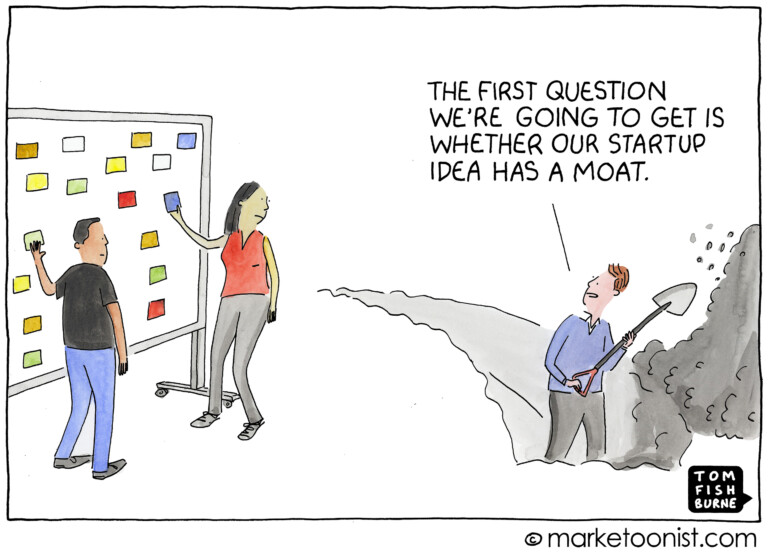Based on Robert Francis Winch’s studies of relationships, he theorized that people are attracted to others who have personality traits they lack.
But is it really true?
I’m not really interested in uncovering any relationship truths here, so I’ll leave that debate open for discussion.
We’re here to muse on all things marketing so let’s apply the “opposites attract” theory here.
As it relates to marketing, I believe Robert Francis Winch’s theory that “people are attracted to others who have personality traits they lack” directly applies.
Here’s why…
…people who are not well versed in marketing, branding, advertising (which is basically understanding how to get people to move from point A to point B) are naturally attracted to marketing buzzards who claim to have the “marketing traits” they lack…
…they’re indeed opposite so they attract.
In turn, this perpetuates a marketing herd mentality where everyone essentially follows the same rules and does the same thing.
“Everyone is marketing on Facebook so that must be the best thing for me to do.”
But maybe success can be found doing the opposite of what attracted you in the first place.
(Yes, this is getting deep so stay focused here.)
Some of the most successful brands in the world were created by doing the “opposite” of the prevailing mainstream.
And they did it using polarity.
Just like the polarity found in magnets.
The orientation of poles within a magnet will either attract or repel each other.
I’m no scientist so I won’t pretend to be but the basic idea here is that generally speaking, the opposite poles of two separate magnets will attract each other.
Successful marketing works just like that too.
Consumers have a tough job syphering through the cacophony of marketing noise and messaging trying to figure out which brands to choose.
When you stand out, you make it easier for them to choose.
And it’s the exact opposite of what the prevailing marketing mainstream preaches “do this, it’s what everyone else does too. If everyone is doing it, it must be good.”
To stand out, you need to stand for something.
What do you stand for?
Don’t worry about trying to please everyone because “opposites attract.”
Rules are made to be broken
Rules.
I don’t like them.
Never did, never will.
Why?
Herds follow rules. And it’s tough to stand out in a herd.
Looking back on my business career, I would say without question that all of the “success” I’ve achieved in my life was a direct result of breaking rules.
But not just breaking rules for the sake of breaking rules.
That doesn’t work.
You have to know the rules to break them in any meaningful way.
Unfortunately, this means spending a lot of time being in the herd, seeing what everyone is doing, learning how everyone else is thinking, etc.
Like the “opposites attract” theory, the better you understand the rules, how and why they became rules, the better you can break them.
If you look at almost every major advancement in the world we live in today, all of the “breakthrough innovations” came from breaking the rules in a big way.
Albert Einstein Broke Rules
How else could he have dreamed up theories and try to make sense of what was never deemed possible? Einstein made impossibilities possible.
Jimmy Hendrix broke rules on the guitar as did Eddie Van Halen.
Steve Jobs broke rules too.
You get my drift.
When I started DIGS ten years ago, I broke every rule in publishing that I knew—everything I did was opposite to how it was supposed to be done.
And it worked.
Opposites Attract and Rules Are Made to Be Broken
Go free yourself from the rule rut and liberate your soul from the linear robotic think state drudgery of today.
Failure is an option (and why you shouldn’t care.)
Is all this talk about “opposites attracting,” “polarity,” and “rule-breaking” freaking you out and making you uncomfortable and thinking, “but what if I fail?”
Perfect.
That’s the exact space you need to occupy to do your special thing.
Fear is good. And so is failure.
Remember the oldie but goodie rule—”nothing in life is guaranteed?”
So, rest assured, you’re good either way.
The funny thing about rules is they are finite; they have a beginning and end.
People like Albert Einstein taught us what happens when you go “beyond” the existing rules when you keep pushing outward toward the impossible.
Amazing things can happen.
But first, throw out the foolhardy rule that “failure is not an option.”
Of course, it is. (And why you shouldn’t care.)
Failure is far and away the best way to learn and gain knowledge that after multiple fails become infinite and powerful wisdom.
There is a powerful lesson in the “keep going” part of the story, as we all have a tendency to fall prey to the “not working, going to fail” impatience trap.
But the real fun resides in the opposing of rules and doing the opposite of what everyone wants you to believe—you might be surprised by what you find out there.






